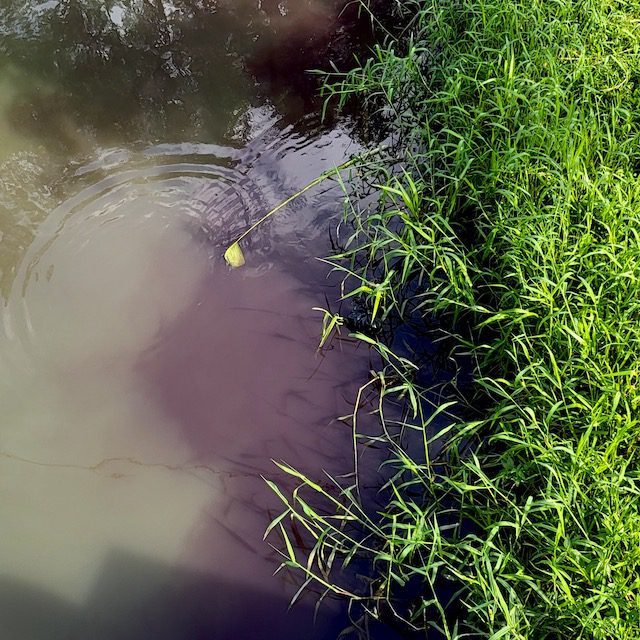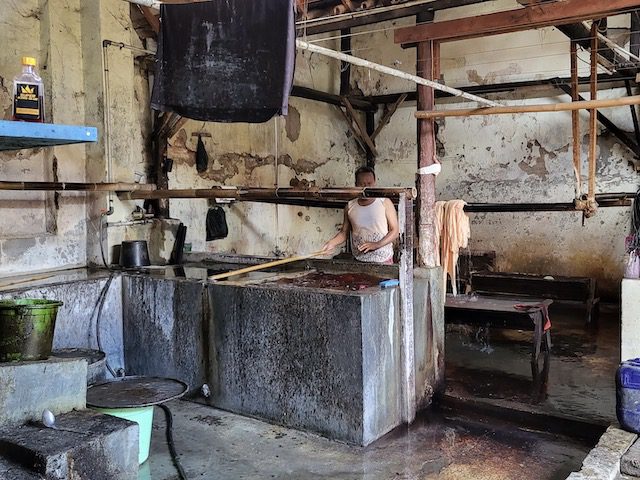Known as the “Batik City” of Indonesia, Pekalongan has a rich cultural heritage deeply intertwined with the art of batik. Over the years, Batik has become a significant part of Pekalongan’s economy and culture, employing thousands of people across the city.
However, beneath the beauty of this craft, Pekalongan has faced a Batik problem that threatens the survival of this traditional art form. While Batik has gained international recognition for its cultural significance and artistic value, it is essential to shed light on the hidden issues faced by the workers who create these exquisite pieces.


Figure 1 & 2. Some of Batik Process that Exposed to Hazardous Materials
Unsafe Working Conditions
Batik involves the use of various chemicals such as dyes, wax, and fixatives. Workers often lack proper safety equipment and training to handle these hazardous materials, putting their health at risk.
The process of Batik rquire the use of hot wax and hot dye baths, which can lead to burns or heat-related illnesses if workers are not provided with appropriate protective clothing and training.
Some workshops also has inadequate ventilation, result in the build-up of fumes from the chemicals used in the batik process. This can lead to respiratory problems and other health complications for workers.
Low Wages
Many Batik workers, particularly those in small-scale workshops or informal settings, are paid meager wages that barely cover their basic living expenses. The labor-intensive nature of Batik production often requires long hours, and yet workers struggle to make ends meet. It results many batik workers live in poverty and has a hard time to provide for their families or access education and healthcare.
Unhealthy Living Environments
The rapid growth of the batik industry has taken a toll on the city’s rivers, which have become heavily contaminated by untreated waste and chemical dyes discharged from textile factories. This pollution not only poses a grave threat to the local aquatic ecosystem but also endangers the health and livelihoods of communities that depend on the rivers for sustenance.


Figure 3 & 4. Rivers in Pekalongan that are Contaminated with Batik Substances.
The Batik industry may be celebrated for its artistic beauty and cultural significance, but the existence of toxic working environments is a stain on its reputation. Workers who pour their sweat and labor into creating these exquisite textiles deserve fair treatment, safe working conditions, and a better quality of life. By addressing these issues collectively, we can ensure that the art of Batik continues to flourish while respecting the dignity and rights of those who create it.





